This is a preprint.
Dynamics of amylopectin granule accumulation during the course of the chronic Toxoplasma infection is linked to intra-cyst bradyzoite replication
- PMID: 39282379
- PMCID: PMC11398317
- DOI: 10.1101/2024.09.02.610794
Dynamics of amylopectin granule accumulation during the course of the chronic Toxoplasma infection is linked to intra-cyst bradyzoite replication
Update in
-
Dynamics of amylopectin granule accumulation during the course of chronic Toxoplasma infection is linked to intra-cyst bradyzoite replication.mSphere. 2025 Jul 29;10(7):e0020525. doi: 10.1128/msphere.00205-25. Epub 2025 Jun 10. mSphere. 2025. PMID: 40492719 Free PMC article.
Abstract
The contribution of amylopectin granules (AG), comprised of a branched chain storage homopolymer of glucose, to the maintenance and progression of the chronic Toxoplasma gondii infection has remained undefined. Here we describe the role of AG in the physiology of encysted bradyzoites by using a custom developed imaging-based application AmyloQuant that permitted quantification of relative levels of AG within in vivo derived tissue cysts during the initiation and maturation of the chronic infection. Our findings establish that AG are dynamic entities, exhibiting considerable heterogeneity among tissue cysts at all post infection time points examined. Quantification of relative AG levels within tissue cysts exposes a previously unrecognized temporal cycle defined by distinct phases of AG accumulation and utilization over the first 6 weeks of the chronic phase. This AG cycle is temporally coordinated with overall bradyzoite mitochondrial activity implicating amylopectin in the maintenance and progression of the chronic infection. In addition, the staging of AG accumulation and its rapid utilization within encysted bradyzoites was associated with a burst of coordinated replication. As such our findings suggest that AG levels within individual bradyzoites, and across bradyzoites within tissue cysts may represent a key component in the licensing of bradyzoite replication, intimately linking stored metabolic potential to the course of the chronic infection. This extends the impact of AG beyond the previously assigned role that focused exclusively on parasite transmission. These findings force a fundamental reassessment of the chronic Toxoplasma infection, highlighting the critical need to address the temporal progression of this crucial stage in the parasite life cycle.
Conflict of interest statement
Conflicts of Interest: None
Figures
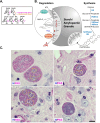

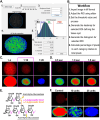
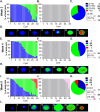
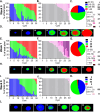

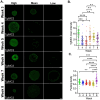

References
-
- Dubey J. P., Jones J. L., Toxoplasma gondii infection in humans and animals in the United States. International journal for parasitology 38, 1257–1278 (2008). - PubMed
-
- Hill D. E., Chirukandoth S., Dubey J. P., Biology and epidemiology of Toxoplasma gondii in man and animals. Anim Health Res Rev 6, 41–61 (2005). - PubMed
Publication types
Grants and funding
LinkOut - more resources
Full Text Sources
Research Materials
